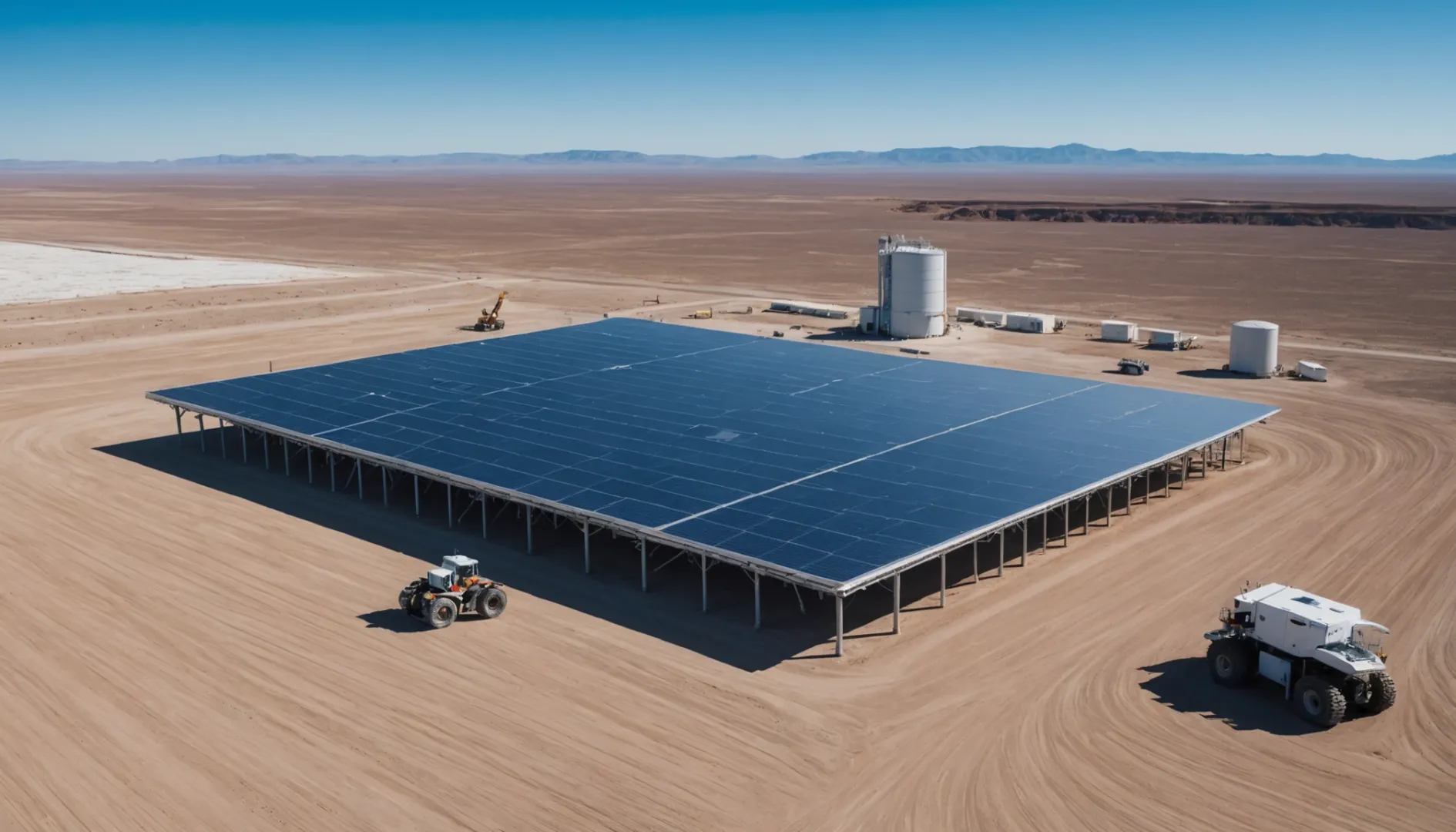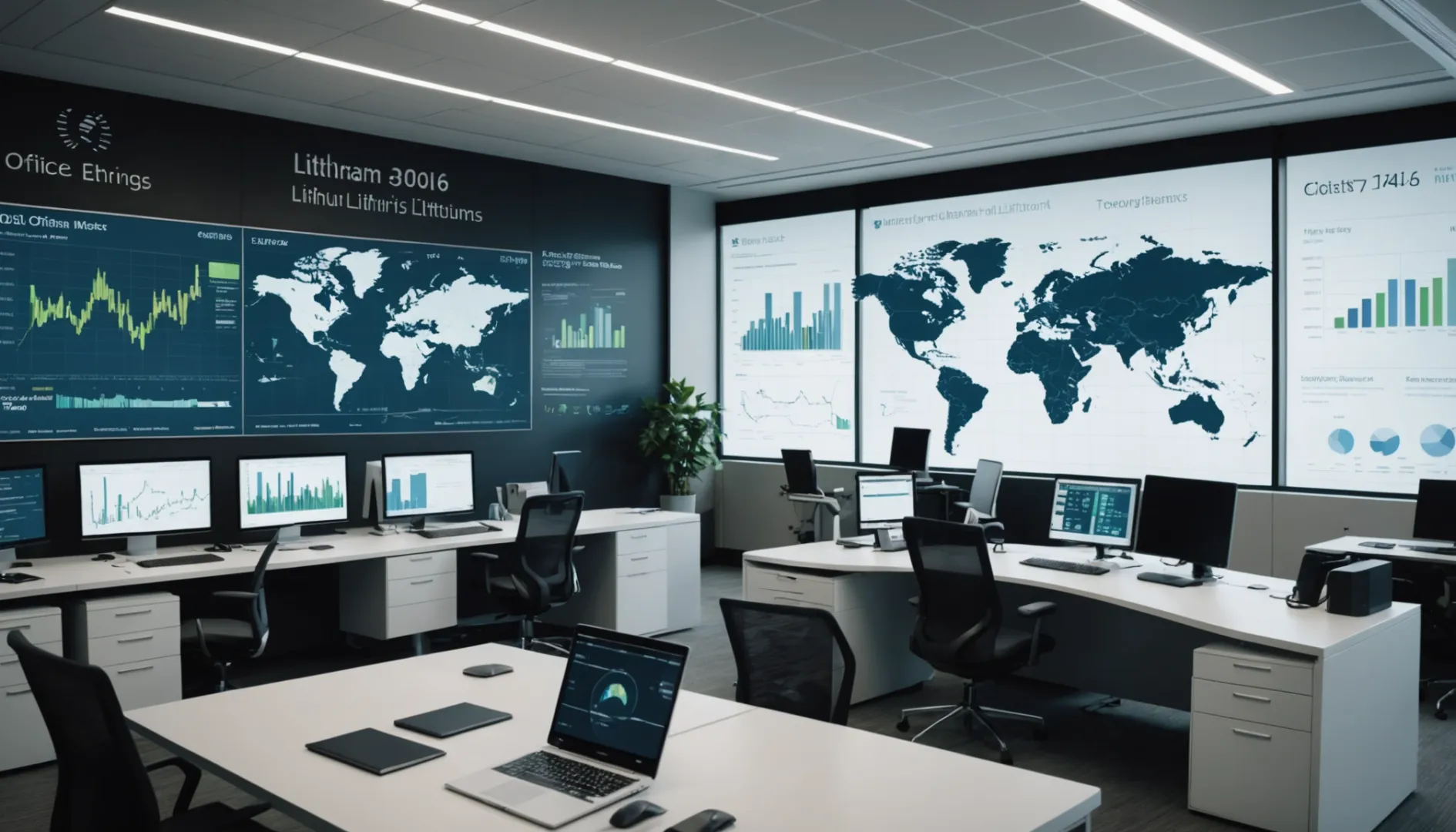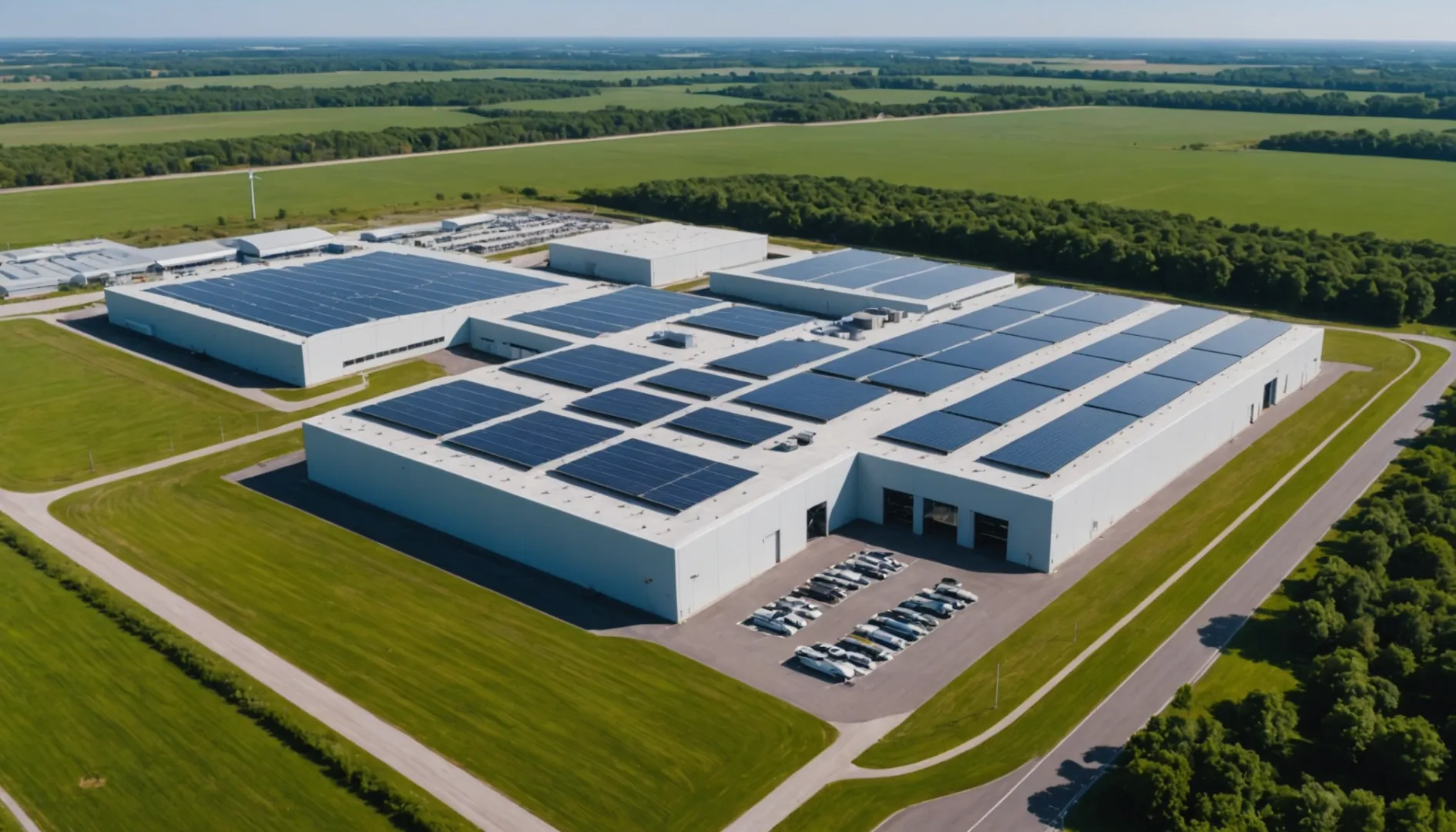Ever since I first heard about electric vehicles, I've been curious about the magic element powering this green revolution: lithium.
Investing in lithium could be a smart move for your portfolio, given its essential role in electric vehicle batteries and renewable energy storage, promising robust growth. However, it's crucial to weigh market volatility, geopolitical factors, and technological advances before diving in.
I've found myself pondering the potential of lithium investments over countless cups of coffee. The excitement of being part of a future-focused sector is thrilling, but it's not without its complexities. In this blog, I'll explore the dynamic landscape of lithium markets, uncovering trends, opportunities, and risks to help you navigate this electrifying investment journey.
Lithium demand to reach 2.5M metric tons by 2030.True
Driven by EVs and energy storage, demand is expected to increase.
China produces 77% of global lithium-ion batteries.True
China is the largest consumer and producer of lithium batteries.
What Are the Current Market Trends in Lithium?
Have you ever wondered why lithium is such a hot topic these days? Let's dive into the trends shaping this dynamic market.
The current market trends in lithium are shaped by increased demand from the electric vehicle (EV) sector and energy storage solutions, price volatility, a shift towards lithium iron phosphate (LFP) batteries, and geopolitical influences. Despite challenges, the long-term outlook remains positive due to lithium's critical role in renewable energy.
Increasing Demand from EVs and Energy Storage
The other day, as I was driving my electric vehicle (EV), it struck me just how integral lithium has become to our daily lives. With more countries pushing for green transportation1, the demand for lithium-ion batteries is soaring. It's like watching a neighborhood grow overnight. By 2030, we're expecting global demand to hit an impressive 2.5 million metric tons of lithium carbonate equivalent, a massive leap from 292,000 metric tons back in 2020. This growth isn't just powering up the EV industry—it's also fueling investments in new battery technologies.
Price Volatility and Market Adjustments
I remember chatting with a friend who's been investing in commodities, and he mentioned how the rollercoaster ride of lithium prices kept him on his toes. After a significant dip in 2023, we saw some stability emerge by Q3 2024. This volatility often feels like trying to predict the weather; it’s partly due to oversupply and a quiet spot market. Producers are now pulling back on production to balance the scales. Finding price stability2 is crucial—not just for investors like my friend but for the health of the market as a whole.
Shifts in Battery Chemistry
When I heard about the shift toward lithium iron phosphate (LFP) batteries, it reminded me of when I switched from desktop to laptop years ago—seeking something safer and more efficient. LFP batteries offer these advantages over the older nickel-cobalt-manganese (NCM) types. This move aligns with broader industry trends towards sustainability and efficiency. Imagine reworking an entire supply chain—from raw material extraction to battery manufacturing3—to keep up with this change.
Geopolitical and Investment Considerations
Geopolitics is another layer in this complex cake. Think about how policies favoring EV adoption and critical mineral strategies are reshaping industry dynamics. The market is projected to grow from $26.88 billion in 2024 to $134.02 billion by 2032, reflecting a CAGR of 22.1%. I recently read about Africa becoming a new hotspot for mining projects—a gold rush of sorts for investment opportunities4 amid these shifts.
Sustainability and Technological Advancements
Environmental concerns are nudging the industry towards greener practices. Innovations in lithium extraction and recycling are like turning an old house into an eco-friendly masterpiece. As the industry evolves, there’s more emphasis on reducing mining's ecological footprint. Technological advancements are driving improvements in production efficiency and battery performance, aligning with the sustainability goals5 many stakeholders hold dear.
Global lithium demand will reach 2.5 million tons by 2030.True
The demand increase is driven by the EV and energy storage sectors.
Lithium prices remained stable throughout 2023-2024.False
Prices were volatile, with significant drops in 2023 and some stabilization in Q3 2024.
How Is the Demand for Lithium Expected to Change?
Imagine a world where every car hums quietly down the street, powered not by gasoline but by lithium-ion batteries. It’s closer than you think!
Lithium demand is expected to soar, potentially reaching 2.5 million metric tons by 2030, driven by electric vehicles and energy storage innovations. This surge reflects our global shift towards renewable energy and a greener future.
The Electric Vehicle Boom
I remember the first time I sat behind the wheel of an electric car; it was like stepping into the future. The demand for lithium, the heart of these vehicles, is skyrocketing as electric vehicles (EVs) become increasingly popular. With countries worldwide pushing for greener solutions, it's no wonder EVs are leading this charge. China, for instance, produces about 77% of the world's lithium-ion battery supply, which speaks volumes about lithium resources6 being crucial for the future of transportation. The International Energy Agency predicts that EV sales will keep climbing, fueling more lithium demand.
Energy Storage Revolution
But it’s not just cars that are driving this demand. Think about all those solar panels and wind turbines you see popping up everywhere. They need efficient energy storage systems to ensure a reliable power supply even when the sun isn’t shining or the wind isn’t blowing. This is where lithium steps in again, transforming how we store renewable energy. More countries are adopting these solutions, making lithium technology7 a key player in this energy revolution.
Market Trends and Price Volatility
Yet, like any good story, there's a twist—market volatility. Prices for lithium dropped significantly in 2023 before showing signs of stabilization in 2024. I’ve learned that this kind of fluctuation happens for several reasons, such as oversupply and changing battery technologies like the shift towards lithium iron phosphate over nickel-cobalt-manganese chemistry.
Investment Opportunities and Challenges
For those of us with an eye on investment, the global lithium market is projected to grow massively by 2032. Regions like Africa are turning into key players with new mining projects on the horizon. However, it’s wise to consider geopolitical factors and sustainability concerns. As we move forward, lithium recycling8 might just be the next big thing in ensuring a sustainable supply chain.
Technological Advancements and Sustainability Concerns
On the tech front, advancements in battery chemistry and production efficiency are pivotal. Companies are racing to find more eco-friendly ways to extract lithium, reducing environmental impact. Government policies supporting EV adoption and critical mineral strategies will also shape how demand evolves. The road ahead for lithium is as thrilling as my first electric car drive—full of potential and innovation.
Global lithium demand will reach 2.5 million metric tons by 2030.True
Driven by EV and energy storage sectors, demand is expected to surge.
Lithium market size will grow from $26.88B in 2024 to $134.02B by 2032.True
Projected growth at a CAGR of 22.1% due to rising demand.
What are the key risks and challenges in lithium investment?
Diving into lithium investments feels like riding a roller coaster—you’re exhilarated by the potential but wary of the twists ahead.
Investing in lithium carries risks such as market volatility, geopolitical influences, environmental concerns, and technological changes. To effectively manage these risks, investors need to stay informed and adaptable to market dynamics.
Market Volatility
When I first dipped my toes into lithium investments, I quickly realized it was akin to watching the wildest of stock markets. One moment, prices are soaring; the next, they plummet. Back in 2023, I watched in dismay as prices dropped due to oversupply. It felt like being on a seesaw that just wouldn’t steady itself. By 2024, things began to stabilize, but the lesson was clear: keeping an eye on market trends9 is crucial. It’s like being a weathered sailor—knowing when to ride the waves and when to brace for a storm.
Geopolitical Influences
I remember the first time I realized how much global politics could influence my portfolio. It's fascinating yet daunting how much power China holds in this space, dominating the lithium-ion battery market. When countries start adjusting their policies, it feels like trying to navigate a ship through ever-changing waters. Knowing the geopolitical factors10 can help me anticipate those shifts and steer clear of potential hazards.
Environmental Concerns
I care deeply about our planet, and investing in lithium sometimes feels like walking a tightrope between innovation and sustainability. The environmental impact of lithium mining is significant, and I’ve seen firsthand how regions rich in lithium are scrutinizing their practices. Stricter regulations often follow, which can delay production and affect investments. Focusing on sustainability practices11 is not just smart—it's necessary for long-term success.
Technological Shifts
I once attended a conference where a speaker talked about battery technology advancements like they were science fiction coming to life. The shift from NCM to LFP batteries was one of those moments where I felt both excitement and anxiety. These technological innovations12 could disrupt the markets at any time. Keeping up with these changes is like trying to catch lightning in a bottle—challenging but potentially rewarding.
Regulatory Challenges
Navigating regulatory landscapes in lithium investment is like trying to solve a complex puzzle where the pieces are always changing. I've learned to stay on top of regulatory changes13 because they can greatly impact compliance costs and operational strategies. It's about understanding the rules of the game so that I can play it better—and maybe even win.
Lithium demand will reach 2.5 million metric tons by 2030.True
Global demand for lithium is projected to grow significantly due to EVs.
China produces 77% of global lithium-ion battery supply.True
China is the leading producer, dominating the lithium-ion battery market.
How Can You Invest in Lithium Stocks and ETFs?
Ever wondered how to tap into the booming lithium market? Let me share how I started investing in lithium stocks and ETFs, and how you can too.
Investing in lithium stocks and ETFs means picking companies involved in lithium production or related industries, using a brokerage account to buy shares, and diversifying to reduce risks. Before diving in, evaluate company financials, market trends, and geopolitical influences.
%[Modern lithium production facility in a semi-arid landscape]
Understanding Lithium Market Dynamics
When I first considered investing in lithium, I realized that understanding the lithium market14 was essential. The demand for lithium is set to skyrocket, mainly due to electric vehicles (EVs) and energy storage needs. However, I noticed how volatile the market can be, with prices sometimes swinging wildly based on investor mood.
Choosing Lithium Stocks
The excitement of picking lithium stocks reminded me of choosing a fantasy football team. I focused on companies involved in mining or battery technology. My strategy was to look at their financial health and where they operate—just like scouting a new player for untapped potential. Especially those companies in emerging markets like Africa seemed promising.
Exploring Lithium ETFs
Lithium ETFs caught my attention when I realized they offered a diversified approach. They bundle various lithium-related stocks, which feels like having a mix of players from different leagues on your fantasy team. Comparing different ETFs15 helped me understand their holdings and past performances.
Evaluating Investment Risks
Every investment comes with risks, and lithium is no different. I pondered over price volatility, geopolitical tensions, and environmental concerns. It was like considering if a star player might get injured or transferred mid-season.
Utilizing Brokerage Accounts
To jump into this investment game, I needed a brokerage account. It's the platform that lets me trade stocks and track my investments. I made sure to pick one with solid research tools and fair trading fees.
Staying Informed with Market Trends
Keeping up with lithium market trends felt like following the latest sports news. Shifts towards lithium iron phosphate (LFP) batteries instead of nickel-cobalt-manganese (NCM) chemistry intrigued me. These insights helped shape my investment strategies.
By following these steps, I've been navigating the complex landscape of lithium investments effectively. Staying alert to market developments helps me adjust my strategies as needed.
Global lithium demand to reach 2.5M metric tons by 2030.True
Projected increase driven by electric vehicles and energy storage needs.
China produces 50% of global lithium-ion battery supply.False
China actually produces around 77% of the global supply.
TOWO Power Is a leader for lithium battery product solution company from China
Conclusion
Investing in lithium offers potential growth due to rising demand from electric vehicles and energy storage, but investors must navigate market volatility, geopolitical factors, and sustainability concerns.
-
Learn how green transport boosts lithium demand for sustainability. ↩
-
Discover factors affecting lithium price stability and future trends. ↩
-
Understand why LFP batteries are gaining popularity over NCM. ↩
-
Explore emerging opportunities in Africa's growing lithium sector. ↩
-
Find out how lithium extraction is becoming more sustainable. ↩
-
Understand where lithium is sourced globally, crucial for market insights. ↩
-
Discover cutting-edge uses and advancements in lithium applications. ↩
-
Learn about eco-friendly solutions for handling lithium waste. ↩
-
Stay informed about price fluctuations affecting your investment decisions. ↩
-
Understand how geopolitical dynamics shape lithium market conditions. ↩
-
Explore the ecological challenges influencing regulatory actions. ↩
-
Discover innovations that may redefine lithium demand. ↩
-
Learn about compliance challenges affecting your investments. ↩
-
Explore current market trends and opportunities in the lithium sector. ↩
-
Discover which lithium ETFs offer diverse and promising portfolios. ↩








